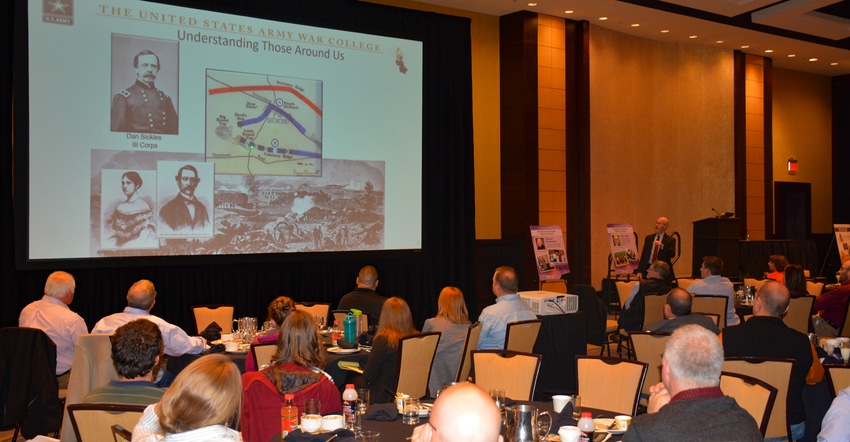
It’s June of 1863. Gen. Robert E. Lee, commander of the Confederate Army, has just won a decisive battle in Chancellorsville, Va. He sights are set on invading the North, so he leads his Army of Northern Virginia through the Shenandoah Mountains and eventually into Pennsylvania.
By early July of that year, the largest and bloodiest battle of the Civil War was fought in Gettysburg, Pa. The result: a resounding Union victory, and Lee retreating to safety in Virginia.
For retired Col. David Dworak, a self-described history buff, the Battle of Gettysburg is a great tool to teach future military leaders about strategic leadership, something he does at the U.S. Army War College in Carlisle, Pa.
But how does this relate to farming? Dworak, featured speaker at this year’s Pennsylvania Dairy Summit in Lancaster, thinks all leaders, even dairy managers, can be better by learning from past leaders’ mistakes and the decisions that lead to their downfall.
“There are insights that we have learned over time that are worth considering and taking into the future at any level,” he said. “What I have learned is that the environment will often dictate success.”
Decisions on the battlefield
When it comes to the Battle of Gettysburg, Dworak said you can learn lot from the decisions made by Confederate and Union generals that ultimately led to the battle taking place.
Gen. Robert E. Lee, the leader of the Confederate Army, scored major victories in the first couple of years of the war and was confident that he had mastered the Union generals’ tactics.
Dworak said that Lee was used to the slow, methodical movement of Union troops that he countered with his fast-moving, agile Confederate force, often catching Union troops off-guard.
Lee moved quickly into Pennsylvania, he said, to ambush Union troops and invade the North. Facing Lee was Gen. George Meade, who took control of the Union forces just days before Gettysburg.
Rather than move slowly, Meade was in hot pursuit of Lee and they would eventually meet in and around Gettysburg. But Lee’s assumptions of Meade led to his downfall, Dworak said. Meade changed his tactics, allowing his forces to get a better position to defend.
The famous Pickett’s Charge, which happened on the third day of battle, was something Lee thought would work based on similar tactics used in the Napoleonic Wars to great success. Once again, though, Lee’s assumptions would come back to haunt him.
“Lee knows it worked before. But the environment is different, the leaders are different, the situation is different. Lee doesn’t realize it, and that when it gets him,” he said.
Ultimately, the Confederate forces are nearly destroyed. After the Union victory, Lee and his defeated army escaped back to Virginia.
Lessons learned
So, what’s the takeaway from the Battle of Gettysburg? Dworak said Lee ultimately lost perspective of the environment around him.
Knowing your environment, he said, is one of three questions you should answer before delving into an important decision or making plans for the future. The other two are how well you know yourself and how well you know those around you.
“If you know the answers to these questions, the greater knowledge we have, the greater odds of success,” he said.
Even Albert Einstein has pondered what it takes to make a good decision.
“Einstein was asked, if you had one hour to save the world, what would you do? He said, ‘I would spend 55 minutes thinking about it and then spend the last five minutes doing something about it,’” Dworak said.
Farmers often have to make quick decisions based on things that are out of their control: If it’s warmer than usual in early April, do I plant early and reap the benefits, or do I wait it out? Heavy rains are forecast, and the manure pit is getting full. Should I spread now even though my nutrient management plant says not to?
“What Einstein is arguing is maybe you should step back, take a second and think about what you’re facing,” he said. “And then, after you figure out what is the underlying problem, what’s causing the problem, the history of it, after you determine all of that, then think about how you approach the problem.”
About the Author(s)
You May Also Like






